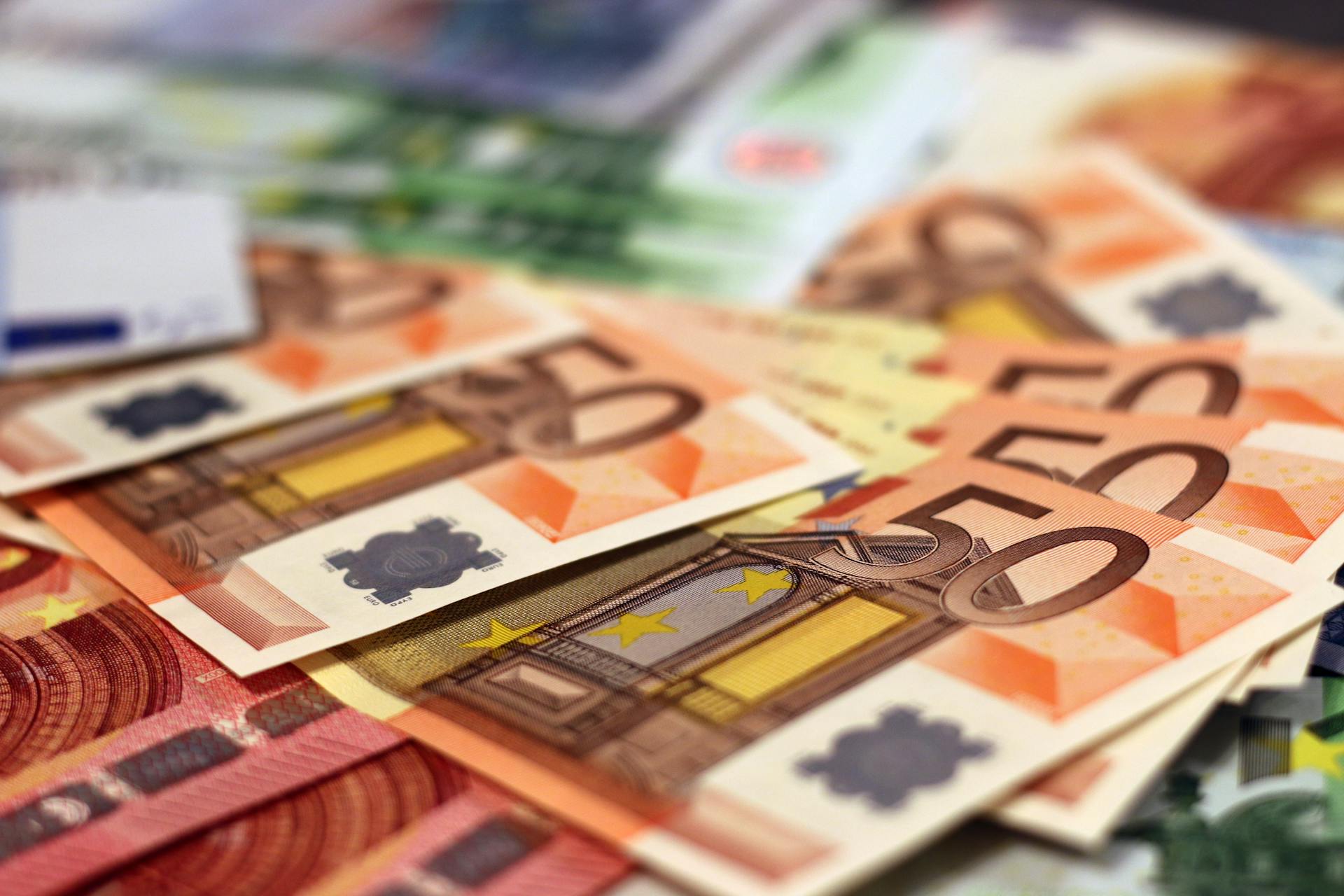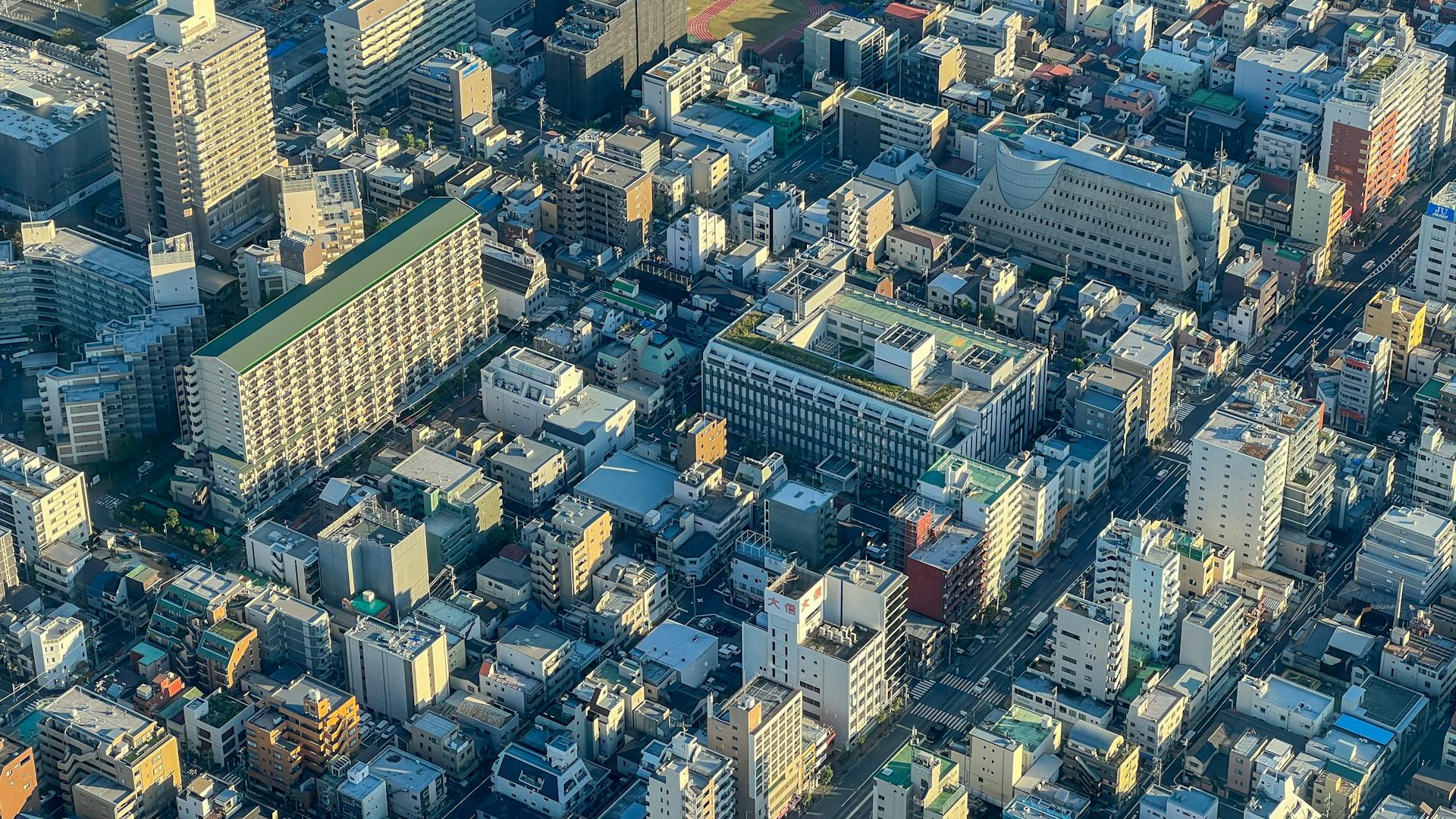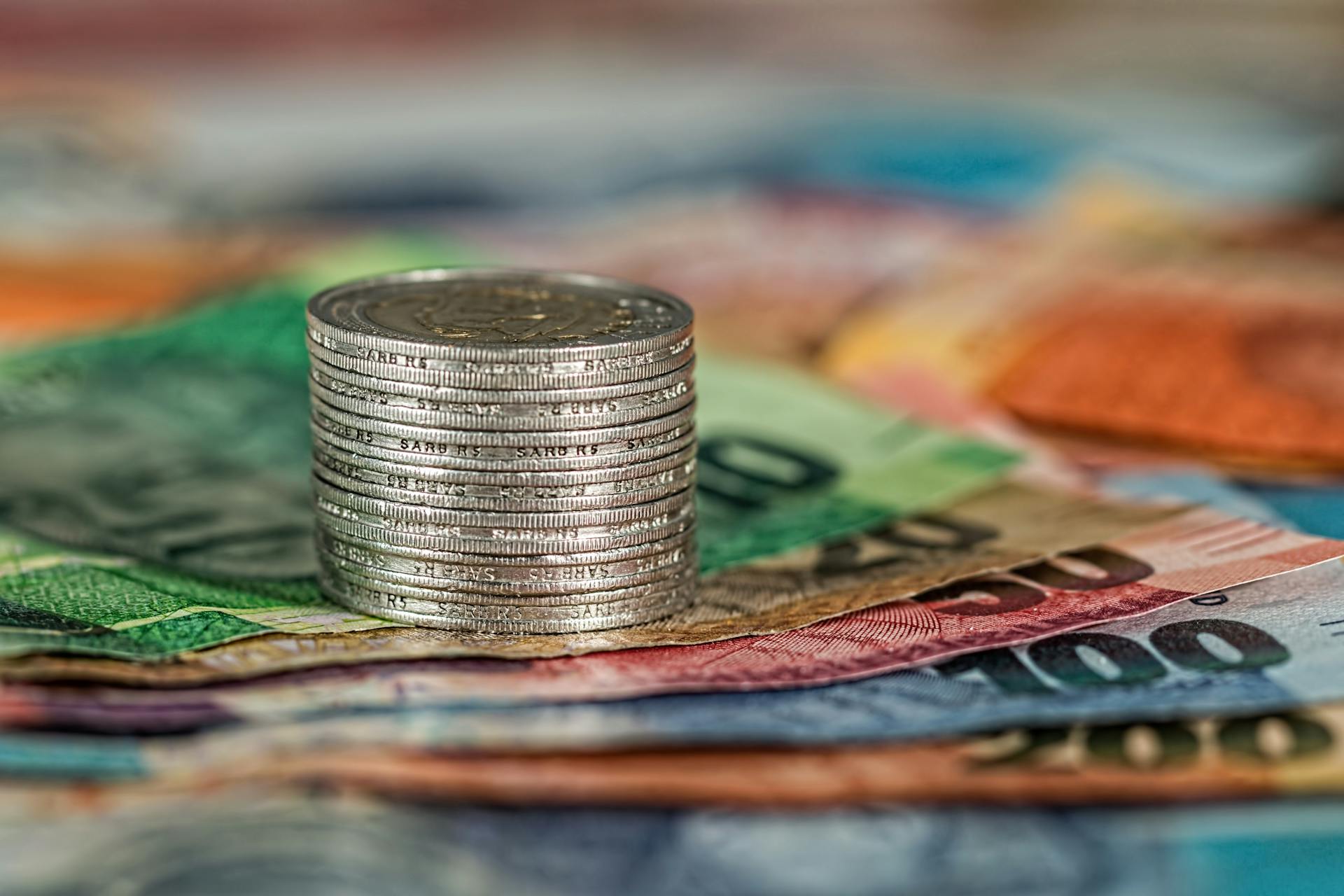
The Japanese monetary unit has a rich history that spans centuries. The first Japanese currency was introduced in the 8th century, with the introduction of the Wado coin.
The Wado coin was made of copper and was used for everyday transactions. It was also used as a standard unit of exchange for a long time.
In the 17th century, the Tokugawa shogunate introduced the ryō, a gold coin that was used as a standard unit of exchange. The ryō was a symbol of wealth and power.
The ryō was eventually replaced by the yen in the late 19th century. The yen was introduced as a decimalized currency, replacing the earlier currencies like the ryō and the mon.
For more insights, see: International Monetary Standard
History of Japanese Currency
The Japanese currency has a rich and fascinating history that spans over a thousand years. The earliest coins to reach Japan were Chinese Ban Liang and Wu Zhu coins, which were used as precious objects rather than a means of exchange.
Worth a look: Japanese Yen Coins Guide
In the late seventh century, Japan introduced its own coins, known as Mumonginsen and Fuhonsen, which were based on the Chinese system. These coins were made from silver and copper alloys and were used as a form of currency.
The Kōchōsen currency system was introduced in the 8th-10th centuries and featured the Wadōkaichin, Japan's first official coin type. This coin was minted in 708 CE and was based on the Tang coinage from China.
Here are some key dates in the history of Japanese currency:
- 621 CE: Tang coinage (Kaigen Tsūhō) was minted in China.
- 708 CE: Wadōkaichin was minted in Japan.
- 760 CE: The Man'nen Tsūhō and Taihei Genpō coins were introduced.
- 958 CE: The last official Japanese coin issue was made.
- 1871: The New Currency Act was passed, adopting the gold standard.
The introduction of the yen in 1871 marked a significant turning point in Japanese currency history, and the country's monetary system has continued to evolve ever since.
Early Coinage
The earliest coins to reach Japan were Chinese Ban Liang and Wu Zhu coins, as well as coins produced by Wang Mang during the first centuries of the first millennium CE. These coins were more likely to be used as precious objects rather than a means of exchange.
Japan's economy wasn't developed enough at the time, so rice and cloth served as the main currencies. Rice and cloth were likely used as forms of exchange due to their value and availability.
The first coins produced in Japan are called the Mumonginsen and the copper alloy Fuhonsen, which were introduced in the late seventh century. Fuhonsen coins have often been interpreted as charms rather than currency, but it has recently been discovered that they were in fact the first government-made coinage of Japan.
These early coins were based on the Chinese system and were therefore based on the Chinese units of measurement. The introduction of these coins marked the beginning of Japan's transition towards a more developed economy.
Here's a brief overview of the early coins used in Japan:
- Mumonginsen: silver coins without inscription
- Fuhonsen: copper alloy coins
- Chinese Ban Liang and Wu Zhu coins
- Coins produced by Wang Mang
Reform (760)
In 760, a significant reform took place in Japan's currency system. The Wadōkaichin coin had become debased, and local imitations were thriving.
A new copper coin called Man'nen Tsūhō was introduced, worth 10 times the value of the former Wadōkaichin. This was a major improvement, as it restored some value to the currency.
The new silver coin, Taihei Genpō, was worth 10 copper coins, and the gold coin, Kaiki Shoho, was worth 10 silver coins. Unfortunately, silver minting was soon abandoned.
Twelve types of coins were minted during the Nara period, including one coin type in gold. These coins were a significant improvement over the debased Wadōkaichin.
Here are the new coins introduced in 760:
- Man'nen Tsūhō (copper coin)
- Taihei Genpō (silver coin)
- Kaiki Shoho (gold coin)
The value of a coin in rice had fallen to 1/150th of its value in the early 8th century by the middle of the 9th century. This was a clear indication of the problems with the currency system.
Check this out: Japanese Yen Currency Trend
Bakumatsu (1854–1868)
The Bakumatsu period was a time of great change in Japan, and it had a significant impact on the country's currency. The Tokugawa coinage collapsed following the reopening of Japan to the West in 1854.
Foreigners took advantage of the silver-gold exchange rate disparity, leading to the export of large quantities of gold. Gold traded for silver in Japan at a 1:5 ratio, while that ratio was 1:15 abroad.
In 1859, Mexican dollars were given official currency status in Japan, with marks in Japanese and an official exchange rate of three "Bu". They were called Aratame Sanbu Sadame (Fixed to the value of three bu).
The local governments issued their own currency chaotically, leading to a 2.5 times expansion of the nation's money supply between 1859 and 1869. This caused money values to crumble and prices to soar.
Here's a brief summary of the exchange rates during this time:
The system was eventually replaced after the Boshin War and the onset of the Meiji government in 1868.
When Did the Yen Originate?
The yen's name is a derivative of "en", the Japanese term for circle, or round object that itself is derived from "yuan", a Chinese term for imported silver coins. This is where the yen gets its name from.
The Meiji government adopted the yen in 1871, replacing the metal coinage of the Tokugawa shogunate that preceded it as well as the patchwork of paper scrip issued by many of the country's feudal lords. This marked the beginning of the yen's history.
The yen's value was pegged to the dollar in 1949 but allowed to float in 1973 following the collapse of the Bretton Woods system of fixed currency exchange rates. This change had a significant impact on the yen's value.
The first Meiji one yen banknote, Meiji Tsūhōsatsu (明治通宝札), was issued in 1871. This was a significant milestone in the yen's history.
Here's a timeline of key events in the yen's history:
Commodity Money
In Japan, commodity money was used for trading before the 7th-8th centuries CE. This was a significant improvement over simple barter, where commodities were exchanged directly for others.
Commodity money had to meet certain criteria to be widely accepted, such as being compact and easily transportable. It also needed to have a widely recognized value.
Arrowheads were one of the main items used as commodity money in Japan. Rice grains and gold powder were also used.
Commodity money was not unique to Japan, as other countries like China also used items like shells from the southern seas as a form of commodity money.
Recommended read: Monetary Items
Japanese Currency Denominations
Japan is a cash-based society, and it's essential to understand the different denominations of the Japanese yen to navigate everyday transactions smoothly. You'll often see people carrying around a lot of cash, but don't worry, Japan has one of the lowest crime rates in the world.
Coins worth 1, 5, 10, 50, 100, and 500 yen are in circulation, alongside ¥1,000, ¥2,000, ¥5,000, and ¥10,000 banknotes. The Japanese count sums in multiples of 10,000 yen, unlike the West where it's in multiples of 1,000.
It's a good idea to have small denominations like 10 yen and 100 yen coins, as well as 1,000 yen notes, handy. Many ticket and vending machines won't accept larger denominations, especially 5,000 and 10,000 yen bills.
Here's a quick rundown of the banknote denominations:
Some Japanese yen banknote denominations are scheduled for a redesign by 2024, featuring notable figures like Eiichi Shibusawa, Umeko Tsuda, and Shibasaburo Kitasato. The new bills will incorporate 3D holograms, making them even more secure.
Modern Japanese Currency
In 1946, Japan introduced the "New Yen" (新円券), replacing the old currency, and American occupation forces used a parallel system called B yen from 1945 to 1958.
The yen has become one of the major currencies of the world, thanks to Japan's economic expansion. The Bank of Japan (BoJ) was created in 1882 as a central bank, and granted sole power to issue currency in 1884.
The yen's value was pegged to the dollar in 1949 but allowed to float in 1973 following the collapse of the Bretton Woods system of fixed currency exchange rates.
Here are some key dates in the modern history of the yen:
- 1946: Japan introduces the "New Yen" (新円券)
- 1945-1958: American occupation forces use the B yen system
- 1949: The yen's value is pegged to the dollar
- 1973: The yen is allowed to float
- 1985: The Plaza Accord agreement leads to the managed depreciation of the U.S. dollar
Modern Yen
The modern yen was introduced in 1946, following the Second World War, when Japan removed the old currency and introduced the "New Yen" (新円券). This marked a significant change in Japan's monetary system.
The old currency was replaced by a parallel system called B yen, used by American occupation forces from 1945 to 1958. This system was eventually phased out in favor of the new yen.
Additional reading: Ripple Monetary System
Since its introduction, the yen has become one of the major currencies of the world, thanks in part to Japan's economic expansion. The yen has also undergone various design changes over the years, with new banknotes and coins being introduced.
Here are some key dates in the history of the modern yen:
- 1946: New Yen (新円券) introduced
- 1945-1958: B yen used by American occupation forces
- 1916: Gold standard one yen banknote introduced
- 1981: 10 Japanese yen coin introduced
The modern yen has come a long way since its introduction, and it continues to play an important role in Japan's economy.
Traveler's Checks
Traveler's Checks are still a viable option in Japan, especially when it comes to exchanging money. They tend to carry more favorable rates than money changers and ATMs.
You can use traveler's checks at leading banks, hotels, ryokan, and stores in major cities, but be aware that they're not accepted everywhere. In fact, very few places outside of major cities accept them.
To get the most out of traveler's checks, make sure to draw them from a Japanese bank. This will minimize the risk of extra fees or rejection.
Here are some key things to keep in mind when using traveler's checks in Japan:
- Draw checks from a Japanese bank to avoid extra fees or rejection.
- Traveler's checks are accepted by leading banks, hotels, ryokan, and stores in major cities.
- Very few places outside of major cities accept traveler's checks.
Best Place to Buy
If you're looking for the best place to buy Japanese yen, consider visiting a large branch of a national bank such as Chase, Bank of America, or Wells Fargo.
These banks often have competitive exchange rates and can provide a convenient and secure way to purchase foreign currency.
You can also buy Japanese yen at airports, but be aware that exchange outlets there may feature wider buy/sell spreads due to the high demand for currency exchange in these locations.
It's worth noting that buying currency at an airport can be a convenient option, especially if you're already traveling, but you may end up paying a bit more for the privilege.
Frequently Asked Questions
What is slang for money in Japan?
In Japan, "okan" is the most common slang for money, while "kinen" is another term used to refer to it.
What was the former Japanese monetary unit?
The former Japanese monetary unit was the mon, which was used from 1336 to 1870. It co-circulated with the sen until 1891.
Is there a unit smaller than yen?
Yes, there is a smaller unit of Japanese currency called sen, although it's no longer used in everyday life. Sen is divided into 100 sub-units called rin, but sen is the smallest unit still in use.
Featured Images: pexels.com

